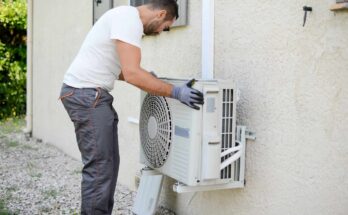Do you sleep worse at night, and in the morning, you wake up feeling depressed and overwhelmed? Suffering from coughs, rhinitis, and endless colds? Are you suffering from headaches and bad moods? It’s time to think about the cleanliness and freshness of the air in the apartment.
The cleanliness and freshness of the air directly affect our health and quality of sleep. Stale air, high in carbon dioxide, dust, and other contaminants, causes headaches, tightness in the chest, and fatigue. And if you sleep in the stuffy every night, then it is not at all surprising that you do not get enough sleep and do not feel well in the morning.
This problem needs to be addressed! Read more: Utah Personal Injury Attorney
Why does the air in an apartment become polluted?
Unfortunately, even wide-open windows cannot change the situation drastically. Especially when it comes to big cities where the air is clogged with harmful emissions – the industrial, chemical, automobile. Added to these are a host of other reasons that reduce indoor air quality:
- Common household contaminants are dust and dust mites, mold, pet hair. All this can lead to the development of asthma and allergies, especially in young children.
- Tobacco smoke. If you smoke in an apartment, then everything around is saturated with smoke over time, the smell of which cannot be eliminated even by constant ventilation.
- Household chemicals. Striving for cleanliness, a person uses too many products that deal with household pollution and reduce the quality of the air. Volatile organic compounds (VOCs) are released into the air you breathe and can cause choking, coughing, and even serious respiratory illness. It should also be borne in mind that the aroma of “Alpine freshness” has nothing to do with really clean and fresh air.
- Combustion products formed as a result of the operation of gas stoves, combustion of fireplaces, and stoves.
- Pollution from the street – dirt and sand from the roads, soot, fluff, pollen, insects that enter the house in a matter of minutes through an open window.
Air purification in the apartment using modern ventilation
Today, everyone knows the importance of regular dry and wet cleaning and ventilating and humidifying the air. These household hygiene products are sufficient if you live in an environmentally friendly area in your own home with good-ventilation. But not everyone so lucky, and most people living in multi-apartment city buildings have to think about additional measures to clean the air.
Many systems position themselves to improve air quality in an apartment, but not all have the functionality necessary for this.
- Air conditioning. Many people are sure that an air-conditioner is a supply and exhaust ventilation device that provides full ventilation by drawing in air from the street. Any air conditioner has only two main functions – heating and cooling the air already in the apartment. The feeling of freshness when the air conditioner is running is deceptive since it is achieved only by cooling the infinitely circulating air. At the same time, the air can be dusty and supersaturated with carbon dioxide.
- Purifier, humidifier, air ionizer. These three functions are often combined in modern air purifiers that capture the air in the room, clean it of dust particles, humidify it, and charge it with negative ions. At the same time, the air quality is significantly improved. True, as in the case of air conditioners, if the room is not fully ventilated, it essentially cleans the same stale and CO2-saturated air.
- Supply valve. A small device is installed in the wall near the battery and provides natural ventilation to the premises. For a family of 3 people in an apartment, installing at least two valves is necessary to give all family members with fresh air. The operation of the supply valve largely depends on the weather conditions: the presence of wind, the temperature outside.
- Ventilator. A simple, compact, and economical-device for ventilation and minimal air purification even with closed windows. They are usually equipped with 1-2 simple filters and heating elements. The average air consumption of the ventilator is 140 cubic meters/hour, which is ideal for a large room or studio up to 40 square meters. The ventilator draws in air from the street, drives it through a filter, and delivers it into the room.
- Breezer. This is a device that perfectly copes with both ventilation and air purification. A set of filters is installed inside the breather, on which the level of purification of the airflow coming from the street depends. Some types of filters are designed for large and small particles, others for combating unpleasant odors, and others for getting rid of bacteria and allergens. In addition, the breather can have an additional set of functions: CO2 sensors, air pollution, and humidity sensors, ionization, aromatization, heating, and others.



